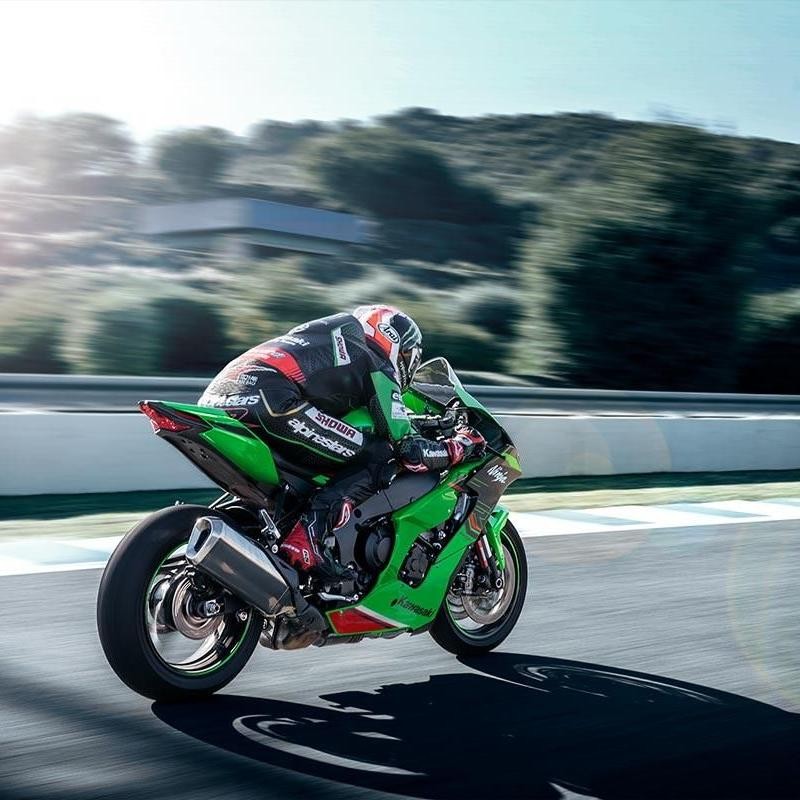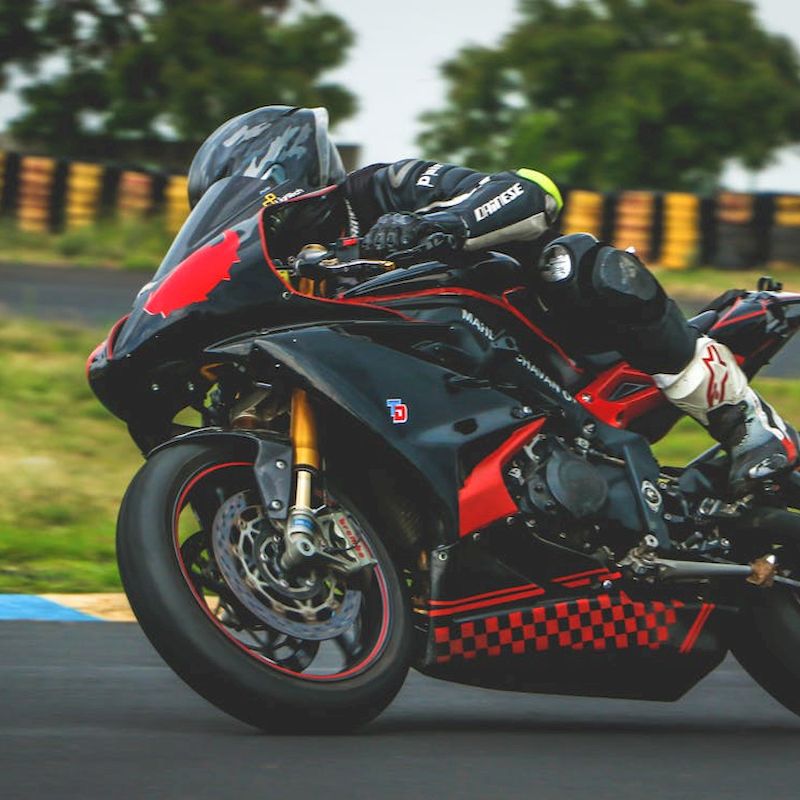Motorcycling is more than just a mode of transportation; it’s a thrilling experience that offers the freedom of the open road. If you’ve ever wondered how to ride a motorcycle for beginners, you’re not alone. Many people find themselves fascinated by the idea of riding, yet they may feel overwhelmed by the technical aspects and the perceived risks involved. Fear not; this guide is designed specifically for you, taking you step by step through the fundamental skills needed to start your motorcycle journey. From selecting the right bike to mastering essential riding techniques, this comprehensive article will equip you with the knowledge and confidence to hit the road safely and enjoyably.
Learning to ride a motorcycle can be an exhilarating journey, but it’s essential to approach it cautiously and methodically. In this guide, we will break down the necessary preparations, skills, and safety measures for beginners. You’ll learn about the different types of motorcycles to consider, how to choose the right gear, and basic techniques for controlling the bike. By the end of this guide, you will have a better understanding of how to ride a motorcycle safely and effectively, preparing you for countless adventures ahead.

How to Choose the Right Motorcycle
Choosing the right motorcycle is one of the most critical steps for beginners. The type of bike you select can significantly impact your learning experience and overall enjoyment of riding. Here are the considerations for choosing the right motorcycle:
- Type of Motorcycle: There are various types of motorcycles, including cruisers, sport bikes, touring bikes, and dual-sport bikes. As a beginner, you may want to start with a lighter bike that offers low seat height and manageable power, making it easier to handle.
- Engine Size: Generally, as a beginner, it’s advisable to choose a motorcycle with an engine size between 250cc to 500cc. Lower-displacement bikes are easier to control, while larger engines can be intimidating and overwhelming for novice riders.
- Weight and Height: Make sure you choose a bike that you can comfortably ride. Ensure that the motorcycle’s weight does not make it challenging to maneuver, especially when learning. You should be able to put your feet flat on the ground while seated.
- Used vs. New: Many beginners opt for a used motorcycle to save money. This can be a great option, especially since new riders may drop the bike or have mishaps frequently while learning. Ensure the used motorcycle is in good condition, has been maintained well, and has a solid reputation.
- Comfort: Take the time to sit on different motorcycles to assess comfort. Ensure you can reach the controls comfortably without overextending your body.
- Test Ride: If possible, test ride the motorcycle before making a purchase. A test ride can give you a feel for the bike’s handling, comfort, and responsiveness.
Choosing the right motorcycle sets the stage for a smoother transition into the world of riding, making it easier to learn the necessary skills and safety protocols.
Essential Gear for Motorcycle Riding
Safety should be your primary concern when learning how to ride a motorcycle for beginners. Proper gear significantly reduces the risk of injury. Here’s what you need:
- Helmet: A high-quality helmet is non-negotiable. Look for one that meets safety standards like DOT or Snell. Choose a full-face helmet for optimal protection, shielding your face and head from both impact and wind.
- Jacket: Invest in a motorcycle-specific jacket made from durable materials such as leather or textile. Look for jackets with armor at critical areas like shoulders and elbows for added protection in case of a fall.
- Gloves: Wearing gloves enhances grip and protection for your hands. Choose gloves made from leather or a combination of materials that offer both comfort and safety.
- Pants: Avoid regular denim; instead, consider motorcycle pants made with protective materials. Look for features like built-in knee armor for extra safety.
- Footwear: Sturdy boots or shoes designed for motorcycle riding provide ankle support and protection. Ensure they have good grip and control for operating the motorcycle effectively.
- Reflective Gear: Visibility is vital when riding on the road. Wearing gear with reflective elements can help enhance your visibility, especially during low-light conditions.
The right gear is essential not only for protection but also for enhancing your overall riding experience. Being well-equipped will allow you to focus on learning rather than worrying about safety.
Fundamental Techniques for Motorcycle Riding
Once you’ve selected your motorcycle and gear, it’s time to learn the basic techniques. Understanding how to operate the motorcycle effectively is key to becoming a skilled rider. Key techniques include:
- Starting the Motorcycle: Learn how to start your motorcycle correctly. This typically involves engaging the clutch, making sure the bike is in neutral, and starting the engine. Familiarize yourself with the location and function of controls before starting.
- Mastering Clutch Control: The clutch is crucial for smooth starts and gear changes. Practice gently releasing the clutch while gradually adding throttle to move forward. Finding the friction zone, where the bike starts to move with minimal throttle, is essential.
- Throttle Control: Learning how to modulate the throttle is necessary for managing speed. Practice accelerating and decelerating smoothly, progressively applying and releasing throttle as needed.
- Turning and Leaning: Properly executing turns involves leaning your body into the turn while maintaining control over the handlebars. This technique helps shift the center of gravity and balance the motorcycle.
- Braking: Learning the right way to brake is vital for safe stops. Use both brakes—a combination of the front and rear brakes—efficiently to avoid skidding. Practice increasing your stopping distance while maintaining control.
- Shifting Gears: Understanding how to shift gears smoothly is critical for control. Learn to shift up and down without causing the bike to jerk or stall. Generally, clutch in, shift, and then smoothly release the clutch while adjusting throttle.
- Lane Positioning: Understanding how and where to position yourself in a lane can enhance your visibility and safety among other vehicles. Keep a safe distance from other vehicles and avoid blind spots.
Practicing these fundamental techniques regularly will help build muscle memory and boost your confidence, enabling you to konw how to ride a motorcycle for beginners.

Practicing in a Safe Environment
As a beginner, finding a safe and suitable environment for practice is essential. Here are some tips for where and how to practice:
- Choose the Right Location: Look for quiet, open areas such as empty parking lots or designated motorcycle training areas. These spaces allow you to practice without the pressure of traffic.
- Set Up Cones or Markers: Use cones or markers to create a basic obstacle course. Practice maneuvering around them, which will help improve your control and handling skills.
- Gradually Increase Difficulty: Start with basic maneuvers and gradually ramp up the difficulty. Once you’re comfortable with turning and stopping, try practicing emergency stops, quick turns, and tight corners.
- Invite Experienced Riders: Learning alongside experienced riders can provide you with valuable feedback. They can offer tips, guidance, and encouragement during your practice sessions.
- Follow a Structured Plan: Consider developing a practice schedule that gradually incorporates new skills. This can help you build upon your foundational techniques systematically.
- Document Your Progress: Keep track of the skills you are practicing and note any areas where you find challenges. This will allow you to focus your practice sessions on specific skills that require improvement.
Riding in a safe environment allows you to build confidence and skill at your own pace, ultimately making you konw how to ride a motorcycle for beginners.
Understanding Traffic Laws and Safety Awareness
Riding in traffic requires a good understanding of traffic laws, safety awareness, and defensive riding techniques. It is essential to become familiar with the following:
- Local Laws: Research and understand local motorcycle laws, including licensing requirements, helmet laws, and specific regulations for motorcycles.
- Defensive Riding: Always anticipate the actions of other road users. Look for potential hazards and be prepared to react quickly. Maintain situational awareness by keeping a lookout for pedestrians, vehicles, and road conditions.
- Use Turn Signals: Signal your intentions to other road users by using your turn signals appropriately. This will help communicate when you’re turning or changing lanes.
- Maintain a Safe Following Distance: Keep a safe space between you and the vehicle in front. A good rule of thumb is to maintain a distance of at least two seconds behind the vehicle ahead of you, increasing that distance in adverse weather conditions.
- Be Cautious in Poor Weather: Riding in rain or windy conditions requires extra caution. If possible, avoid riding during inclement weather until you gain more experience.
- Practice Makes Perfect: Always strive to practice your skills in a variety of conditions. This includes riding at night, in light rain, and on busy streets when you’re ready for the challenge.
Understanding and applying traffic laws and safety measures can make you a safer, more responsible rider when you’re out on the road.
Overcoming Beginner Fears and Building Confidence
It’s natural for beginners to experience fears and apprehension about riding a motorcycle. Here are strategies to help you manage those fears and build your confidence:
- Acknowledge Your Fears: Recognize that fear is a normal part of the learning process. Acknowledge it, but don’t let it hold you back. Write down specific fears and identify how you can work through them.
- Start Slow: Take gradual steps when learning to ride. Start with basic skills and don’t rush the process. Gain confidence progressively before tackling more complex challenges.
- Celebrate Small Victories: Each practice session comes with milestones. Celebrate even minor successes—like mastering a particular skill—rather than solely focusing on the end goal.
- Learn from Mistakes: Instead of becoming discouraged by mistakes, view them as educational experiences. Analyze what went wrong and develop strategies to avoid the same issues in the future.
- Visualization Techniques: Visualize yourself riding confidently and safely. Spend time imagining positive outcomes to help reduce anxiety associated with riding.
- Seek Support: Surround yourself with supportive friends or fellow riders. Sharing your experiences and concerns with others can help buoy your confidence and provide encouragement.
Building confidence takes time, but with patience. Each ride you take will bring you closer to mastering your skills and enjoying the thrill of riding.
Joining a Riding Community
Becoming part of a motorcycle community can significantly enrich your riding experience. Here’s why getting involved with other riders is beneficial:
- Networking Opportunities: Joining a riding community opens up opportunities to meet other enthusiasts who can share valuable insights and riding experiences.
- Riding Groups and Events: Participating in organized group rides, events, and rallies allows you to practice your skills in a supportive environment while making new friends.
- Mentorship: Finding a mentor within the community can provide guidance as you navigate your journey. Experienced riders are often willing to share tips and help beginners learn.
- Regular Maintenance and Safety Clinics: Many communities host workshops on motorcycle maintenance and safety. Taking part in these can bolster your understanding of keeping your motorcycle in top condition.
- Enhanced Opportunities for Learning: Engaging with other riders can expose you to various riding styles, techniques, and safety practices that you might not have encountered otherwise.
Becoming part of a motorcycle community will not only help you konw how to ride a motorcycle for beginners but also make riding a more enjoyable and fulfilling activity.
Importance of Continuous Learning and Skill Development
Motorcycle riding is a lifelong journey of learning. As you progress, it’s essential to continue seeking opportunities for improvement and skill development.
- Take Advanced Riding Courses: After mastering the basics, consider enrolling in advanced courses to refine your skills further. These courses often cover advanced techniques, defensive riding strategies, and emergency handling.
- Stay Informed about Road Conditions: Regularly educate yourself on changing road laws, safety precautions, and best practices. Being informed can help you adapt as new issues arise.
- Practice Maintenance Skills: Knowing how to perform basic maintenance on your motorcycle keeps it in good condition and familiarizes you with its inner workings. This knowledge increases safety and efficiency.
- Explore Different Riding Environments: Challenge yourself by exploring various riding environments, such as urban areas, highways, off-road trails, or mountainous terrain. Each setting will help hone your skills and adapt to different challenges.
- Attend Rider Safety Seminars: Participate in seminars and events dedicated to motorcycle safety. These can provide fresh perspectives and insights to improve your riding habits.
Continuous learning keeps your skills sharp and your passion alive, ensuring that you have an enjoyable and safe riding career for years to come.

Conclusion
Learning how to ride a motorcycle for beginners is an exciting yet challenging adventure that opens up a world of possibilities. By choosing the right motorcycle, gearing up appropriately, and mastering essential riding techniques, you can lay a strong foundation for your journey ahead. Practicing in a safe environment, understanding traffic laws, overcoming fears, and engaging with a riding community are vital components in becoming a competent and confident rider.
As motorcycling is a lifelong journey, remaining committed to continuous learning and skill development will enhance your abilities and deepen your appreciation for riding. Embrace each challenge as an opportunity for growth, and soon enough, you will not only know how to ride a motorcycle but will enjoy every moment in the saddle. Adventure awaits—gear up and hit the open road!